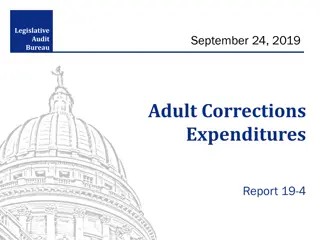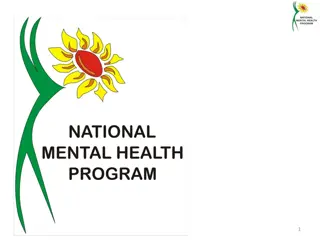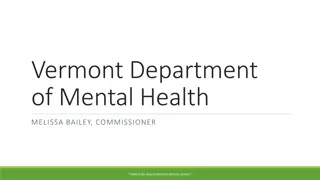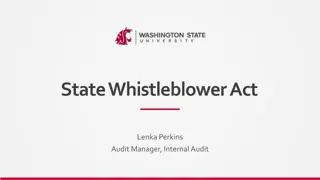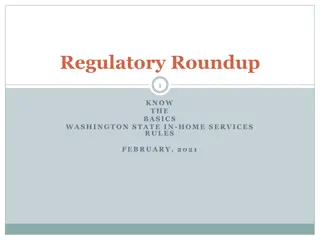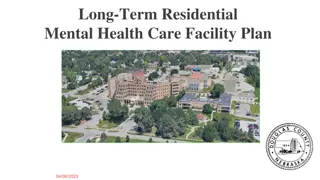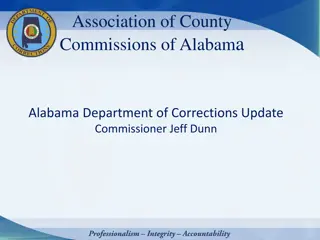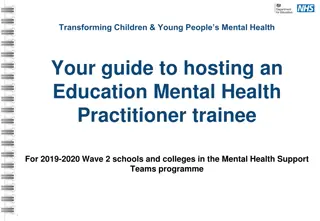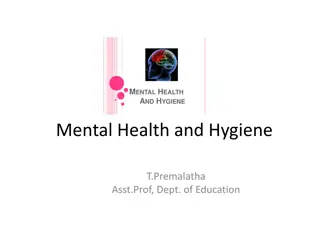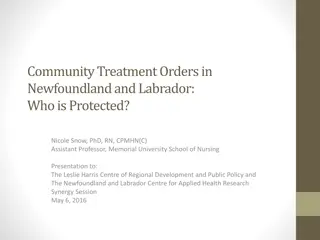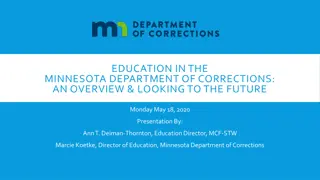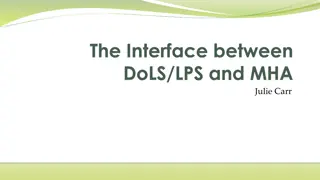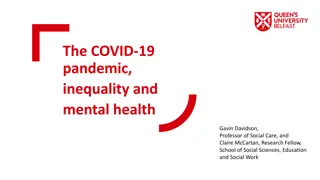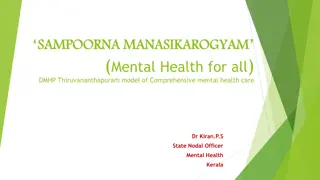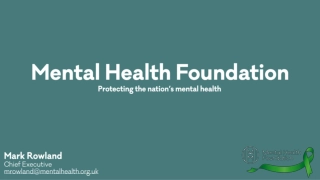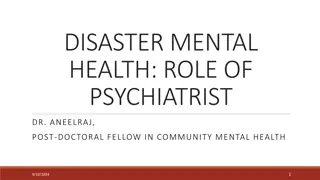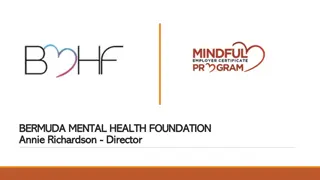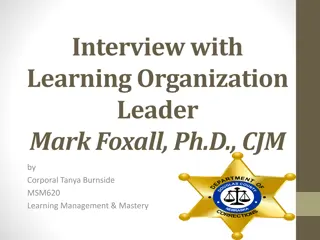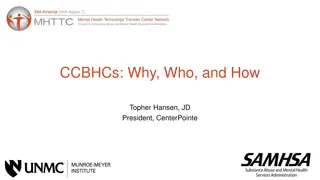Mental Health Services in Washington State Department of Corrections 2019
This document explores mental health services in Washington State Department of Corrections in 2019, covering topics such as mental health in prisons, assessment of mental health needs, challenges in re-entry, DOC facility locations, intake screening processes, veteran population statistics, and prevalence of mental disorders in prison populations.
Download Presentation

Please find below an Image/Link to download the presentation.
The content on the website is provided AS IS for your information and personal use only. It may not be sold, licensed, or shared on other websites without obtaining consent from the author. Download presentation by click this link. If you encounter any issues during the download, it is possible that the publisher has removed the file from their server.
E N D
Presentation Transcript
Mental Health Services in Washington DOC 2019 Bart Abplanalp, Ph.D. Chief Psychologist West Washington State Department of Corrections
Mental Health in Prisons Pathways through the prison Assessment of mental health needs Mental health providers in DOC Veteran population in prison Mental health services available (general vs. veterans) Challenges in Re-Entry
Gender 8% Male Female 92% 1% 1% 4% 5% Caucasian African American 18% Race American Indian/Alaska Native 71% Asian/Pacific Islander Other Unknown
Veteran Population in DOC Veterans 7% Non-veterans 93%
Intake Screening Occurs at Reception WCC Shelton 300-400 per week WCCW Gig Harbor 20-40 per week Mental Health Professional Masters Level or above Triage Self-reported need Active symptoms Functional impairment Behavioral observations
MH Screening Brief screening tool (<10minutes) Medications History of : Treatment Hospitalization MH diagnoses Current/past : Medications MH symptoms Suicide attempts/ideation Desire/need for treatment Behavioral observations
Housing need GP General Population COA Close Observation Area RTU Residential Treatment Unit Mental Health Appraisal/Assessment need Urgent within 24 hours Routine within 14 days PREA concerns Prison Rape Elimination Act
Prevalence of Mental Disorder Prison 70-90% 5-10% 15-50% 1-3% 15-35% ~10% 10-20% 1-2% U.S. Substance abuse Antisocial personality Mood disorders Psychotic disorders Most disorders are over-represented in correctional settings Generally accepted figure is that 15-35% of those incarcerated have a major mental disorder Slightly higher in female populations
Mental Illness in Prison 1/3 with any potentially qualifying diagnosis (about 50% of women) 22% seriously mentally ill (16% severe mood disorders, 6% psychosis) About 5% with debilitating symptoms 20% in active Tx (close to 40% of women) treatment refusal a problem in substantial minority of SMI
Mental Illness in Prison Substance abuse/dependence problems At least 75% of WA DOC population Much higher percentage with history of physical and/ or sexual abuse as children PTSD is overrepresented high chance of witnessing or being a victim of violence Underdiagnosed TBI, FAS/FAE, and other cognitive disorders
Mental Health Treatment Referral process Screening triage Inmate self-referred ( Kite ) Staff referral Emergency Eligibility based on Offender Health Plan (OHP) Medical necessity Symptom severity Functional impairment CRC and 3 for Free Primary Therapist assignment All inmates in active treatment (typical caseload = 80-100) MHA, MHU, Treatment Plan
Mental Health Treatment Case management Individual therapy Various orientations Limited (CBT, CPT, EMDR) Group treatment Psychoeducational and process-oriented Closed and open ended Examples: anxiety, depression, trauma-focused, DBT Crisis responding Psychiatric services MH is the gatekeeper Pts seen every 90 days
Challenges for Mental Health in DOC High caseloads due to concentration of MI in prison MI is considered a stigma/weakness MI are much more likely to be the victims of violence and exploitation Common release problems $40 gate money Greyhound bus ticket 30 day supply of meds Releasing homeless Felony conviction makes employment and housing difficult
Challenges for Mental Health in DOC Creating true community-based transition program Work Release requirements can make it difficult for SMI to succeed Availability and timeliness of community MH follow-up Placement into supported living ORCS is a great example of what can go right
Future Directions Improved coordination of care medical/CD Develop structured psychological Tx More effective than meds for many conditions Stronger psychosocial rehab focus in residential Continue to develop trauma-related services Stronger training and services directed at suicide prevention More robust training to be done by MH staff Improved assessment Strengthen transitional programming and services Better community liaison, placement Expand DOC outpatient services?










